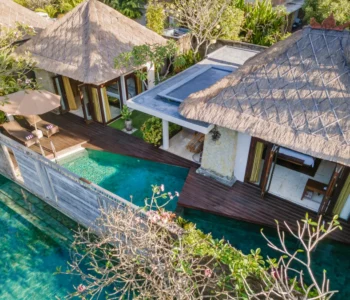

Today’s travellers may feel envious of those who visited Bali back when it was ‘untouched’, but do not realise the difficulty of not only getting to the island but also the challenges once they arrived. Sake Santema, owner of antiques dealer Indies Gallery, explores early travels to Indonesia and Bali, complemented by prints and images of the day.
It is hard to imagine that around the year 1900 only a hundred people visited Bali each month to stay on the island, and an expedition required bringing one’s own horses and translators. If people wanted to sleep in a western style bed, they also had to bring that themselves.
For people living in the west, a visit to the far ‘East Indies’ took months, and was a costly undertaking. Nowadays, around 17 million people visit Indonesia annually, of which 40% visit the island of Bali.

The history of tourism to Indonesia can be traced back centuries ago when kingdoms welcomed merchants from China and the Middle East to their ports, which led to the development of a bustling trade and cultural exchange. The arrival of European explorers and traders in the 16th and 17th century marked a significant turning point, as they themselves established trading posts and colonies, which attracted large numbers of European travellers who were fascinated by the exotic customs and natural beauty.
In the 19th century, travelling into Bali wasn’t easy as it was still informally ruled by multiple local kings. All foreign travellers needed permission, written in both Balinese and Dutch. Receiving a positive reply from rulers would often take up to months, resulting in only a few travellers setting out to discover the island. The 1906-8 Dutch invasion in Bali sealed their control of the island. Dutch government officials, most of them linked to businesses like the opium trade or land taxation, were the first to move to Bali. Later, the Dutch, in agreement with local Balinese kings, started to develop a Western-like infrastructure. Visitors would claim that with these roads and bridges, Bali was the most enlightened island in the Dutch East Indies. This accessibility helped prepare Bali for future tourism.
The industrial revolution was a real boost in tourism between the West and the East with the invention of steamships, which eased long distance travel in the mid-19th century. In 1869, the Suez Canal opened, reducing the distance by over 7000 kilometres, as ships no longer needed to travel around southern Africa. The Dutch Royal Rotterdam was founded in the year 1883, a shipping company that handled the postal traffic between the Netherlands and the Dutch East Indies. The company had fast and luxurious mail ships, and soon also started transporting passengers.

Aviation services to the East Indies pioneered in the early 20th century, and in October 1924, KLM started its first intercontinental flight, connecting Amsterdam to Batavia (Jakarta). These first intercontinental flights were again a major step in the history of tourism, as the travel time to Java and Bali could be reduced immensely. In 1933 KLM proudly advertised that it took five and a half days to reach the Dutch East Indies, compared to 6 weeks on a ship; this made a considerable difference. The Amsterdam – Batavia flight was the world’s longest distance scheduled service until the outbreak of the Second World War.
The Bali Hotel in Denpasar opened in 1928, and was the first international class hotel on the island. Guests, among them Queen Elizabeth and Mahatma Gandhi, could enjoy a 20-course rijsttafel, literally meaning ‘rice table’ in Dutch, a tasting smorgasbord of local cuisine. The building of The Bali Hotel marked the beginning of Bali’s transformation from a ‘travel destination’ to ‘tourism destination’.
The images shown in this article are offered for purchase by Indies Gallery, dealer in authentic maps, prints, books and photographs, dating from the fifteenth to the twentieth century. www.indiesgallery.com
Indies Gallery also offers these decorative art works as reprints. You will find these at www.oldeastindies.com





